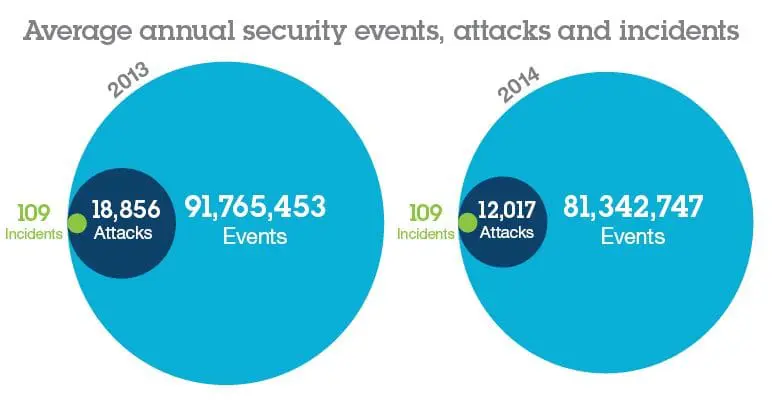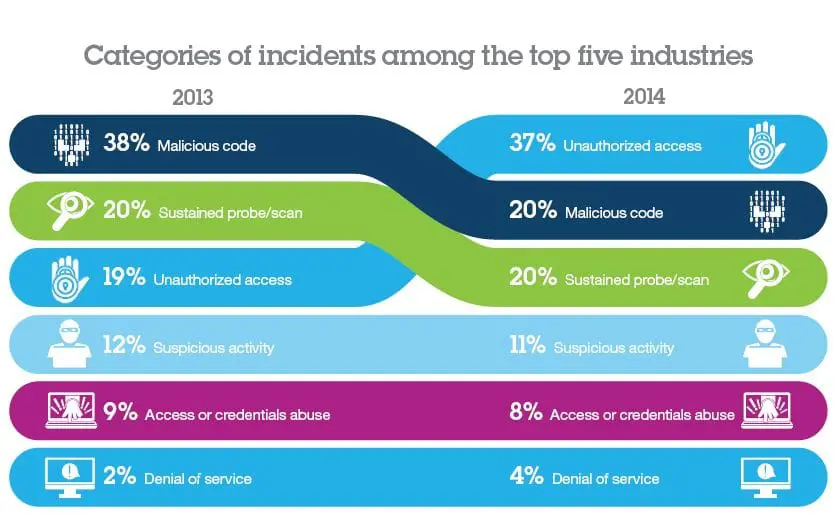An Architect’s Guide to Managing Cyber Threats
By Victor Insurance Managers LLC Summary It can happen to anyone.
Text
By Victor Insurance Managers LLC
Summary
It can happen to anyone. An event on a system or network detected by a security device or application: malicious activity that is attempting to collect, disrupt, deny, degrade or destroy information system resources or the information itself.
As an architect, if you don’t think you need cyber protection or don’t believe someone would want to hack into your system, you may already be in trouble. It’s tempting to think that since you are an architectural firm and not part of one of the most frequently attacked industries that transact business online, you may not have much to worry about. Unfortunately, that thinking is dangerous.
Attackers are typically interested in finding the path of least resistance and simply failing to keep up with necessary security software patches and consistently updating your systems could become the opportunity for bad actors to infect your system. It’s vitally important to understand this growing threat—and for your firm to implement the 10 steps outlined below now to protect your future.
Source: IBM 2015 Cyber Security Intelligence Index
Cyberattacks
Design firms of all sizes in all segments are now at risk and are being attacked. For example, a prominent design firm in Seattle was held up by ransomware. An architectural firm in Maryland was tricked into sending its insurance premium to a hacker. Another architecture firm suffered a loss of more than $500,000 in billable hours after two ransomware attacks rendered the firm’s files unusable for days until the data was restored.
Over the past five to ten years, malicious code and sustained probes and scans accounted for most of the security incidents. However, all that changed in 2014 when certain types of unauthorized access incidents rocketed to the top, accounting for 37 percent of the total. However, with an ever-expanding array of malware for which attackers may choose—including viruses, worms, Trojans, spyware, and adware—it seems fairly certain that malicious code incidents will continue to wreak havoc for the foreseeable future.
Attackers are typically interested in finding the path of least resistance and these methods are capable of providing that. The simple failure to keep up with needed patches and consistently updating your systems may be the simple driver that creates the opportunity for bad actors to infect your system.
Source: IBM 2015 Cyber Security Intelligence Index
In a world where more and more companies, people, and devices are connected to the Internet, greater focus must be placed on security and privacy. While the Internet has opened us up to a world of possibilities and global connectivity to millions, the very strength of the network—the speed, openness, and access—creates a myriad of vulnerabilities. Additionally, securing a business’ network grows infinitely more complex as information pours in from thousands of devices through public web-based and cloud service providers.
Architectural firms must educate their employees, clients, and vendors about these risks and take the appropriate actions to protect their information. It’s important for you to follow these security essentials to create a more secure environment for your practice:
1. Build a risk-aware culture
Whether you open a dubious attachment, click on an unknown link, use an infected flash drive, or fail to install a security patch on your laptop, everyone is at risk. Educate your employees about cyber risks and the measures that they can take to protect themselves and the company.
2. Manage and report all incidents
Report all cyber and other potential attacks. Security breaches that occur at different companies or different locations may be related, but this can only be discovered if incidents are reported and analyzed.
3. Defend the workplace
Ensure all devices connected to a network—from a laptop to a printer to a smart TV—are up to date with the latest security software and follow all cyber security management and policy enforcement.
4. Security by design
One of the biggest vulnerabilities in information systems, and wastes of money, comes from implementing services first and adding on security as an afterthought. Build security into your network from the beginning and maintain regular tests to track conformance and compliance.
5. Keep it clean
Cyber criminals target people and businesses that are using old, out-of-date software. Maintain a comprehensive security system and install necessary updates and patches as they are released.
6. Control network access
Companies that channel registered data through monitored access points will have a far easier time spotting and isolating malware.
7. Security in the clouds
If your company utilizes public cloud data centers, ensure you have the tools and procedures in place to monitor possible threats and isolate your data from other companies in that data center.
8. Patrol the neighborhood
Ensure your vendors and clients are also aware of your risk-aware culture.
9. Protect the company’s crown jewels
Every company has crown jewels, whether it is scientific data, acquisitions documents, or clients’ financial and personal information. Whenever your company carries out an inventory, critical data should get special treatment—guarded, tracked, and encrypted as if the company’s survival depends on it.
10. Track who’s who
Ensure you have procedures in place to manage the access and permissions of your employees. If an employee leaves, you must have the control to revoke any access they have to company, client, and vendor information.
10 Tips Source: IBM Security Intelligence 2015
Conclusion
Although dealing with risks such as professional liability, client expectations, and solving difficult design issues are often easier to address, more interesting, or may be more top-of-the-mind for every architectural firm, reminding yourself that you are a business and are not immune to the risks of technology and cyber crime is a great first step to addressing these risks proactively. Implement the 10 steps listed above. You may also want to consider cyber liability insurance to protect your firm. Find out what you need to know about cyber liability coverage in the Architect’s Guide to Buying Cyber Liability Coverage—to help transfer your cyber risks, evaluate the cyber liability policy options available to you, and select the best match in terms of limits and coverage to meet your needs.
Insurance underwriter, Victor works with the AIA Trust to offer AIA members quality risk management coverage through the AIA Trust Professional Liability Insurance Program, Business Owners Program, and Cyber Liability Insurance Program to address the challenges that architects face today and in the future.
All information on this page is copyrighted by the AIA Trust and members of The American Institute of Architects may use the same with permission. The authors and the AIA Trust assume no liability for the use of this information by AIA members or by others who by clicking on any of the links above agree to use the same at their sole risk. Any reproduction or use is strictly prohibited.
This information is provided as a member service and neither the Author nor the AIA Trust is rendering legal advice. Laws vary by state and member should seek legal counsel or professional advice to evaluate these suggestions and to advise the member on proper risk management tools for each project.
More on Cyber Risk & Firm Management & Professional Liability

Professional Liability Insurance Database
Professional Liability
Self Assessment Tests (SATs)
Firm Management ▪ Professional Practice
Is Your Firm Eligible for a Premium Credit?
News ▪ January 2009


